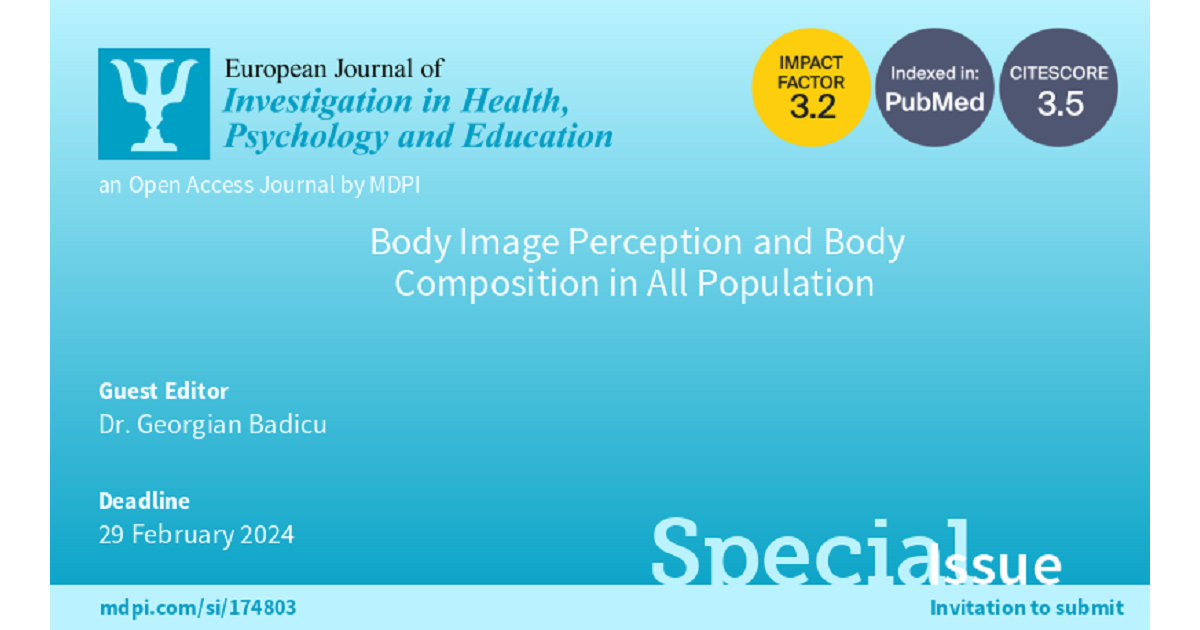- 2.6Impact Factor
- 5.1CiteScore
- 30 daysTime to First Decision
Body Image Perception and Body Composition in All Population
Special Issue Information
Dear Colleagues,
Body image is conceptualized as a multidimensional construct that includes positive and negative self-perceptions and attitudes (i.e., thoughts, feelings, and behaviors) regarding the body. This global term includes subjective, affective, cognitive, behavioral and perceptual processes.
Self-perception of body size seems not to always be in line with clinical definitions of normal weight, overweight and obesity according to the World Health Organization classification. The effect of self-perception of body size disturbances and body dissatisfaction may be the development of eating disorders, such as anorexia nervosa or binge-eating disorder—a major risk factor of obesity development.
Additionally, weight misperception, a perceptual aspect of body image relating to over- or under-estimation of weight, is a separate construct from body dissatisfaction, since one can be quite accurate in the perception of one’s own size and shape, and yet still be dissatisfied.
Concerning body composition, it is important because it measures your overall health and fitness level in terms of your body fat percentage.
Authors are invited to contribute to this Special Issue by submitting original research articles, meta-analyses, and reviews that contribute new knowledge to this area. Papers selected for this Special Issue will be subject to a rigorous peer-review process with the aim of rapid and wide dissemination of research results, developments, and applications.
Dr. Georgian Badicu
Guest Editor
Manuscript Submission Information
Manuscripts should be submitted online at www.mdpi.com by registering and logging in to this website. Once you are registered, click here to go to the submission form. Manuscripts can be submitted until the deadline. All submissions that pass pre-check are peer-reviewed. Accepted papers will be published continuously in the journal (as soon as accepted) and will be listed together on the special issue website. Research articles, review articles as well as short communications are invited. For planned papers, a title and short abstract (about 250 words) can be sent to the Editorial Office for assessment.
Submitted manuscripts should not have been published previously, nor be under consideration for publication elsewhere (except conference proceedings papers). All manuscripts are thoroughly refereed through a single-blind peer-review process. A guide for authors and other relevant information for submission of manuscripts is available on the Instructions for Authors page. European Journal of Investigation in Health, Psychology and Education is an international peer-reviewed open access monthly journal published by MDPI.
Please visit the Instructions for Authors page before submitting a manuscript. The Article Processing Charge (APC) for publication in this open access journal is 1600 CHF (Swiss Francs). Submitted papers should be well formatted and use good English. Authors may use MDPI's English editing service prior to publication or during author revisions.
Keywords
- body image perception
- physical and psychological changes
- physical activity
- body composition
- body size
- self-esteem
- self-concept

Benefits of Publishing in a Special Issue
- Ease of navigation: Grouping papers by topic helps scholars navigate broad scope journals more efficiently.
- Greater discoverability: Special Issues support the reach and impact of scientific research. Articles in Special Issues are more discoverable and cited more frequently.
- Expansion of research network: Special Issues facilitate connections among authors, fostering scientific collaborations.
- External promotion: Articles in Special Issues are often promoted through the journal's social media, increasing their visibility.
- e-Book format: Special Issues with more than 10 articles can be published as dedicated e-books, ensuring wide and rapid dissemination.

